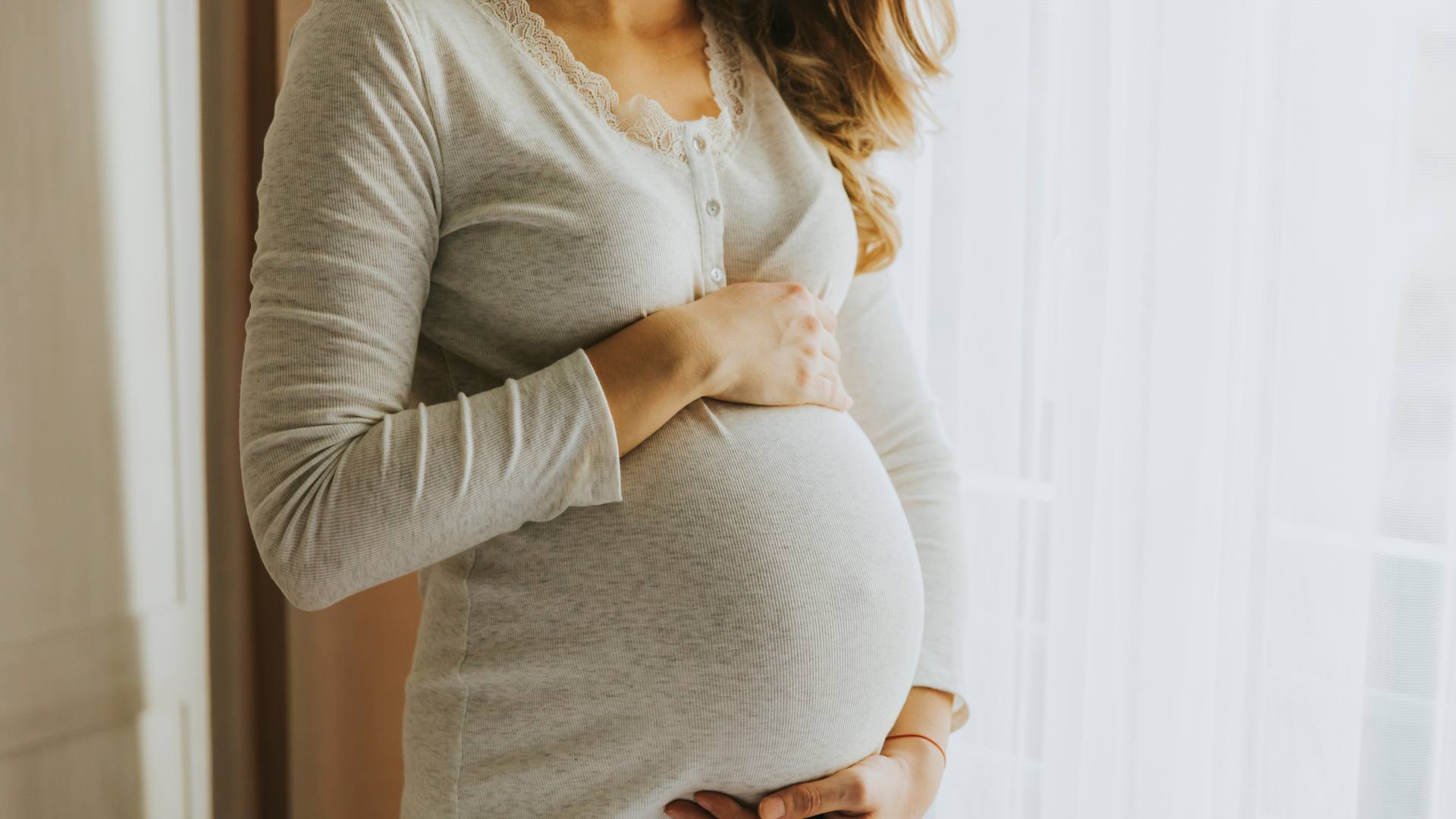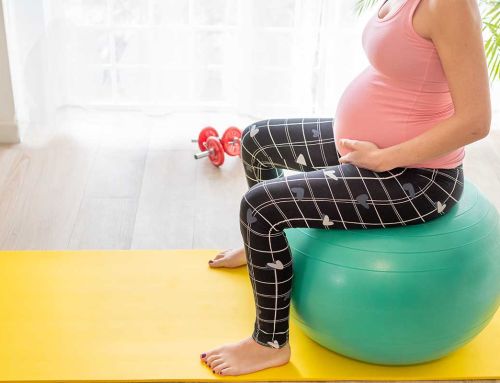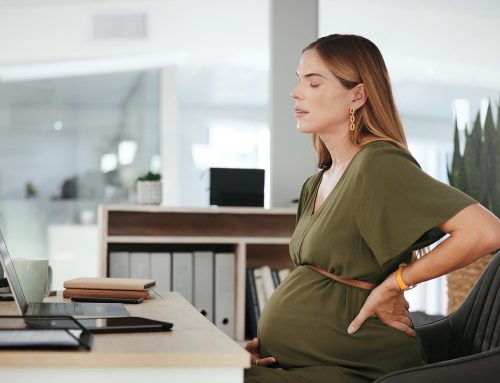Relaxin, a hormone predominantly associated with pregnancy, plays a crucial role in the female body from the early stages of pregnancy to childbirth and into the postpartum period.
Its influence extends beyond pregnancy, affecting various physiological processes, including breastfeeding.
This article explores the functions of relaxin at different stages of pregnancy and postpartum and explores treatment options that can help manage pain and discomfort associated with this hormone.
What is Relaxin and its Function?
Relaxin is a hormone produced primarily by the corpus luteum in the ovary and in smaller quantities by the placenta, uterine lining, and other tissues.
In women, relaxin levels rise after ovulation, peak in the first trimester of pregnancy, and remain elevated until delivery.

Changes in the female body during pregnancy
The primary function of relaxin during pregnancy is to prepare the female body for childbirth.
It relaxes the uterine muscles to prevent contractions in early pregnancy and softens and widens the cervix and pubic symphysis in preparation for labour.
Beyond its reproductive functions, relaxin also affects the cardiovascular, renal, and other systems, aiding in the physiological adaptations necessary during pregnancy.
How does relaxin affect the female body?

Relaxin increases joint flexibility, particularly in the pelvic area. This enhanced mobility is essential for fetal growth and childbirth but can lead to pelvic and lower back instability.
As a result, women may adopt altered walking patterns to accommodate the increased range of motion and the additional weight in the front. This adjustment can sometimes lead to soreness or discomfort in the hips and lower back.
Relaxin in Early Pregnancy
During early pregnancy, relaxin’s most crucial role is preventing premature contractions of the uterus, aiding in implantation and maintaining the pregnancy.
It also helps develop the placenta and supports the establishment of a stable blood supply to the developing fetus.
These early actions of relaxin are essential for creating a favourable environment for the embryo’s growth and development.
Relaxin in Later Pregnancy
As pregnancy progresses, relaxin becomes more focused on preparing the body for delivery.
It softens the pelvis and cervix ligaments, facilitating the expansion necessary for childbirth.
However, this softening and increased flexibility can also lead to joint instability and pain, particularly in the pelvic area.
Relaxin During Postpartum
Relaxin levels gradually decrease post-delivery, but its effects can linger, especially in joint laxity and potential discomfort. This period requires the body to readjust as it returns to its pre-pregnancy state.
The lingering effects of relaxin during this time can contribute to challenges in physical recovery postpartum.
Relaxin While Breastfeeding
Relaxin’s presence continues, albeit at lower levels, during breastfeeding.
It may play a role in the mammary glands, aiding in milk production and ejection, although its exact role in lactation is not as well understood as its role in pregnancy and childbirth.

10 Treatment Options to Help Pain by Relaxin
When addressing pain associated with the effects of relaxin, healthcare providers have several treatment options at their disposal. It’s important to remember that each woman’s experience with pregnancy and postpartum recovery is unique, and thus, treatment plans should be tailored to the individual’s specific needs and circumstances.
Here are some commonly employed treatment strategies:
1. Physical Therapy
Physical therapy stands as a cornerstone in managing pain related to relaxin. It involves a suite of techniques tailored to strengthen muscles and stabilize joints that may be affected by the hormone’s relaxing effects.
Specifically, therapists may focus on exercises that fortify the pelvic floor, abdominal, and back muscles, offering crucial support to joints made more flexible by relaxin.
Besides exercise, posture training plays a pivotal role. Educating women on maintaining correct posture can significantly alleviate undue stress on vulnerable joints and muscles.
Manual therapy, including specialized massage and joint mobilization, can also be effective, helping reduce pain and improve functional movement.
2. Prenatal and Postnatal Massage
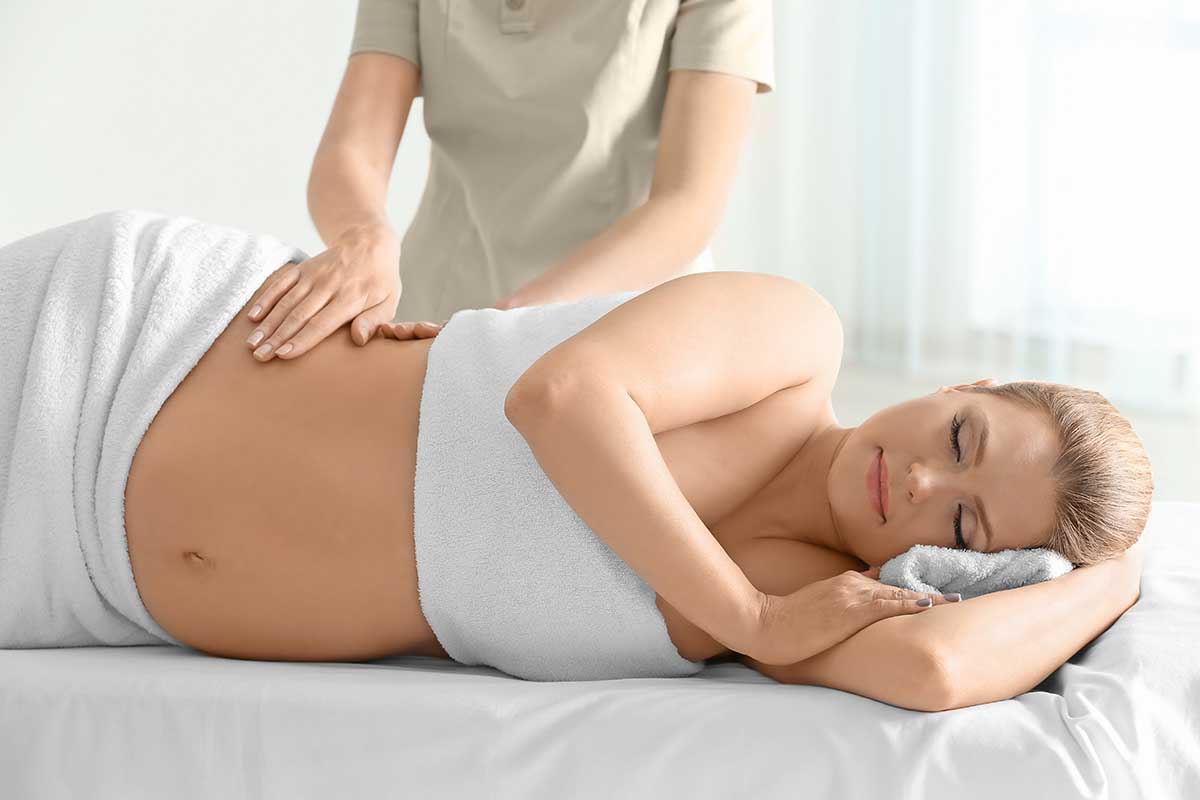
Prenatal and postnatal massages are designed to cater to the unique physiological changes during and after pregnancy.
Pregnancy massage therapy targets muscle tension and joint pain, enhances blood circulation, and promotes relaxation.
Massage therapists consider the increased sensitivity and altered body mechanics during pregnancy, ensuring both mother and baby’s safety and comfort.
Regular sessions can significantly mitigate discomfort associated with relaxin, making the pregnancy and postpartum experience more comfortable.
Make a booking with Gold Coast Pregnancy Massage
3. Acupuncture
Acupuncture, a traditional Chinese medicine practice, offers a non-invasive approach to pain management during pregnancy.
By inserting fine needles into specific points on the body, acupuncture aims to rebalance energy flow and alleviate tension. It is particularly effective for managing joint and muscle pain induced by relaxin, offering a holistic alternative or complement to more conventional treatments.
4. Chiropractic Care
Chiropractic care during pregnancy can be instrumental in managing pain related to relaxin’s effects on the body.
Chiropractors skilled in prenatal care provide safe, gentle adjustments that can help realign the spine and pelvis, easing discomfort in these areas. This treatment can be especially beneficial for addressing pelvic pain and improving overall spinal alignment, contributing to a more comfortable pregnancy.
5. Bracing and Support Garments
Utilizing maternity support belts or braces can offer immediate relief by providing extra support to the abdomen and lower back. These garments are designed to distribute weight more evenly, reduce pressure on the spine and pelvis, and alleviate pain associated with joint laxity due to relaxin. They are a practical, non-invasive option for managing day-to-day discomfort during pregnancy.
6. Medication
While medication use during pregnancy is approached with caution, certain pain relievers deemed safe by healthcare professionals can be considered.
Pregnant women must consult their healthcare provider before taking any medication to ensure the safety of both mother and child.
When necessary, appropriate medication can offer significant relief from relaxin-induced pain.
7. Hydrotherapy for Joint and Muscle Relief
Water-based activities such as swimming or water aerobics can provide substantial pain relief.
The buoyancy of water supports the body, reducing strain on joints and muscles. This gentle exercise can improve mobility and alleviate discomfort without the added stress of weight-bearing activities.
8. Lifestyle Modifications
Adjusting daily routines and activities can play a significant role in managing pain.
Avoiding heavy lifting, taking frequent breaks to rest, and incorporating gentle stretching can prevent exacerbation of symptoms.
When consistently implemented, simple lifestyle changes can profoundly impact reducing discomfort caused by relaxin.
9. Nutritional Counseling
Proper nutrition is vital in supporting the body’s adaptations during pregnancy.
Consulting with a nutritionist can help ensure the diet includes adequate nutrients for strengthening bones and muscles.
This can aid in mitigating the effects of relaxin on the musculoskeletal system.
10. Mind-Body Techniques
Mind-body practices such as yoga, meditation, and deep breathing exercises are beneficial for managing pain by reducing stress and enhancing body awareness.
These techniques can help in coping with the discomforts of pregnancy, offering a holistic approach to pain management and overall well-being.
Collaborative Care
Healthcare providers must work collaboratively with pregnant and postpartum women, considering their health histories, preferences, and concerns. A multidisciplinary approach involving obstetricians, physical therapists, massage therapists, and other specialists can provide comprehensive care and is vital to effectively managing these symptoms.
Before starting any treatment, women must consult their healthcare provider, especially during pregnancy and postpartum. Monitoring and adjustment of treatment strategies are essential to ensure safety and effectiveness.
Managing Pain Caused by Relaxin: Gold Coast Pregnancy Massage
The flexibility and laxity induced by relaxin, while necessary for childbirth, can lead to discomfort and pain, especially in the pelvic region.
Gold Coast pregnancy massage is a therapeutic approach tailored to address these issues.
Pregnancy Massage focuses on relieving tension in the muscles and joints affected by the hormonal changes of pregnancy.
It not only helps in managing pain but also in promoting relaxation and overall well-being during and after pregnancy.
Make an enquiry with Pregnancy Massage Gold Coast
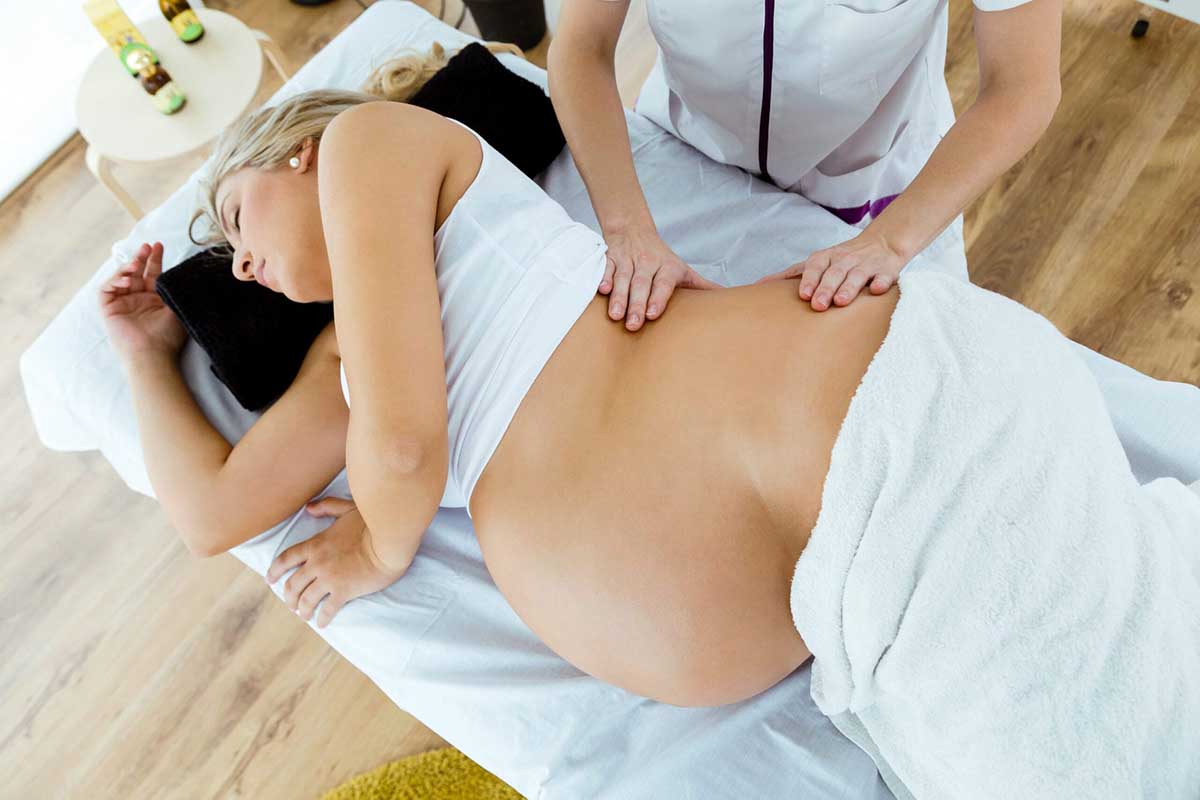
Conclusion
Relaxin is a vital hormone that plays multiple roles throughout pregnancy, childbirth, and beyond. While essential for the natural progression of pregnancy and delivery, its effects can cause physical discomfort.
Therapies like Gold Coast pregnancy massage offer a safe and effective way to alleviate discomfort associated with relaxin, ensuring a more comfortable and manageable pregnancy and postpartum experience.
As with any therapeutic approach during pregnancy, it is essential to consult with healthcare professionals before beginning any new treatment.
Book a Pregnancy Massage Near Me
Disclaimer: This article is for educational purposes only and not a substitute for professional medical advice. Always consult a healthcare professional before starting any new treatment, especially during pregnancy and postpartum. The information provided here should not be used for diagnosing or treating a health problem. Individual treatment effectiveness may vary; professional consultation is crucial for safety and suitability.

